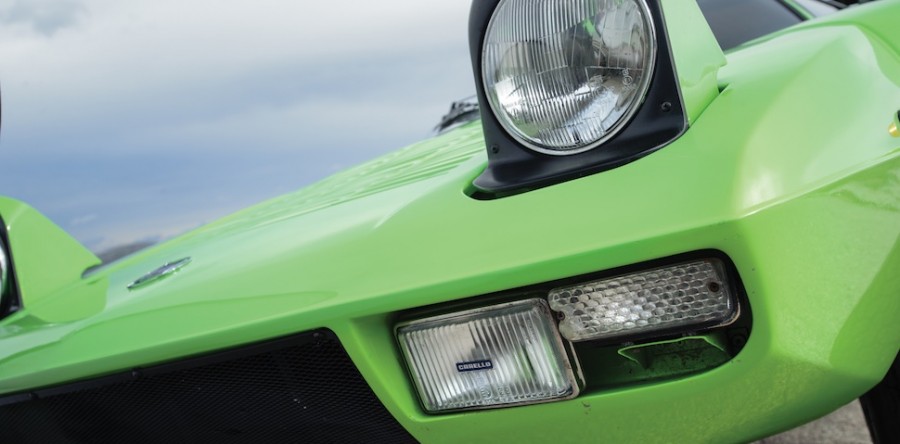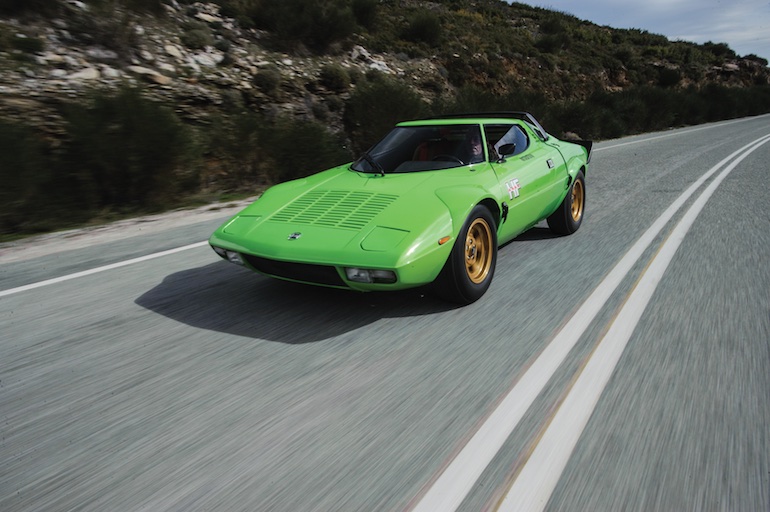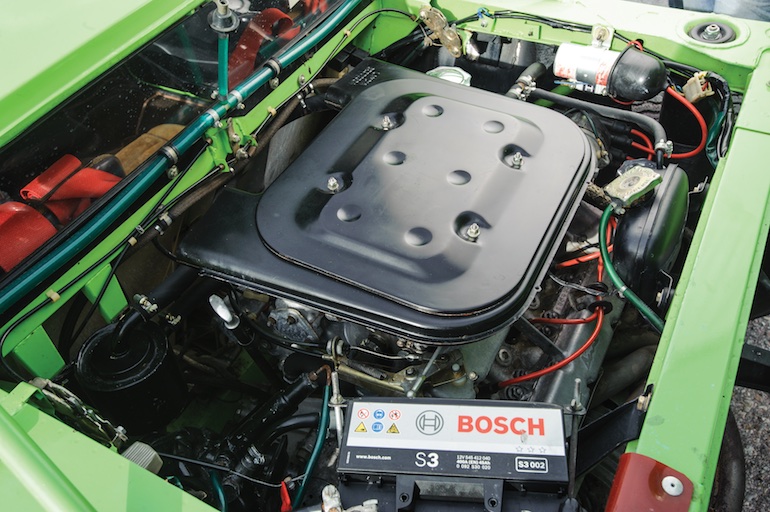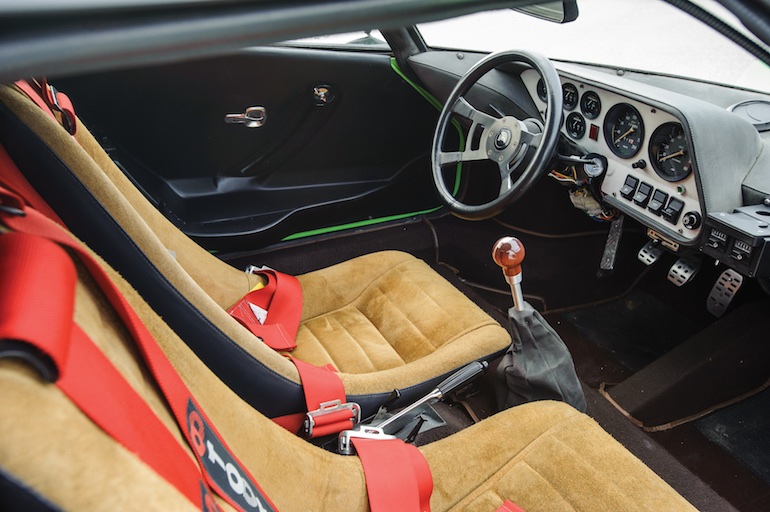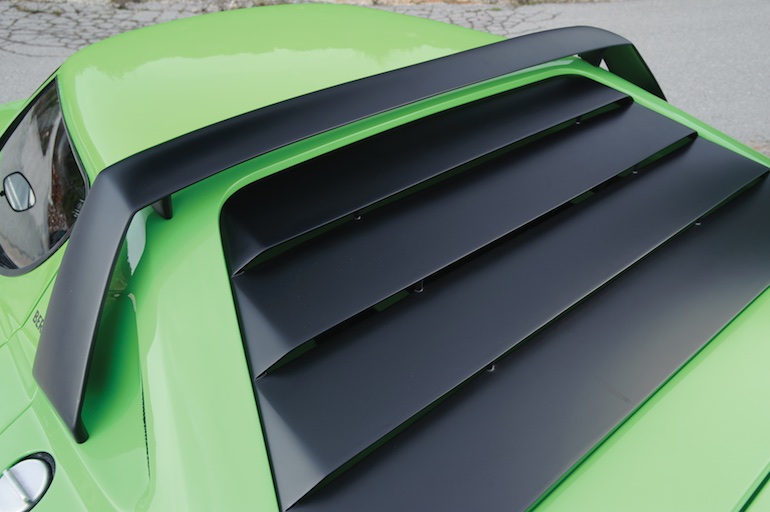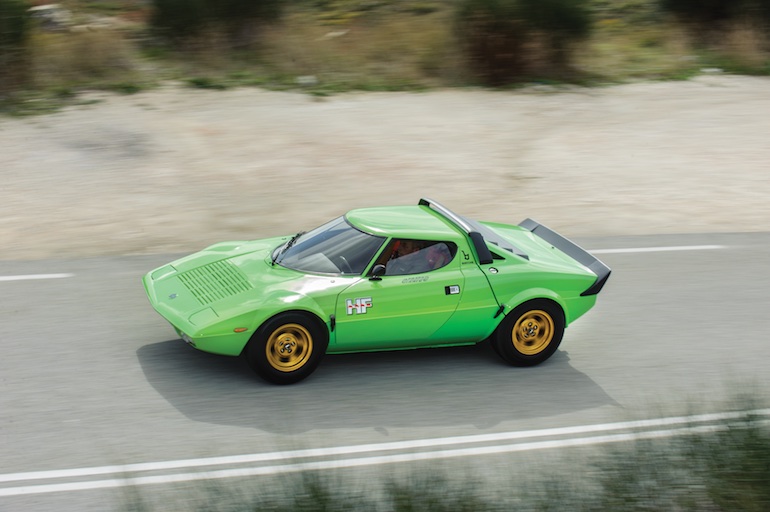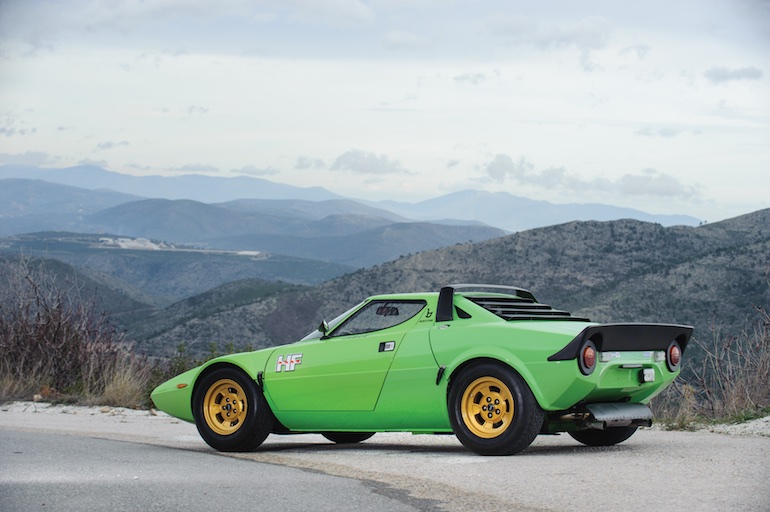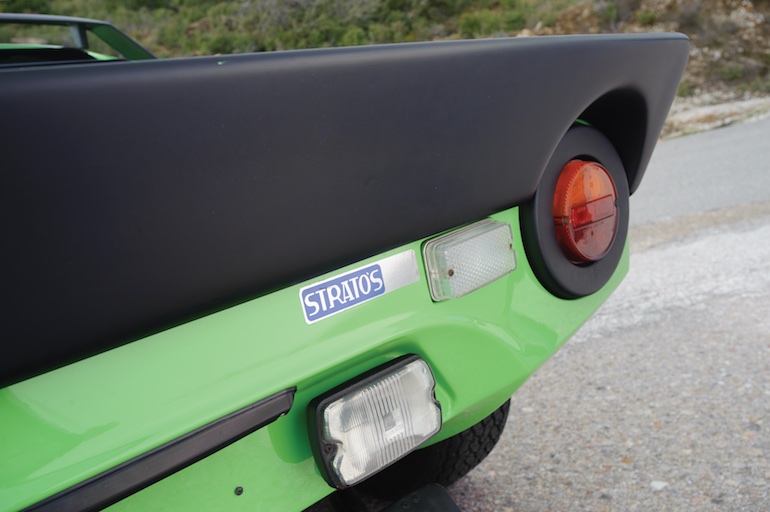Published in Monterey Car Week (1974 Lancia Stratos)
Editor's Note: Thank you RM Auctions for permitting Monterey Car Week to publish these words and photos.
Photo Credit: Tom Wood ©2015 Courtesy of RM Sotheby's
192 bhp, 2,418 cc DOHC Dino V-6 engine with three Weber carburettors, five-speed manual transmission, four-wheel independent suspension with front coil springs and rear MacPherson struts, and four-wheel ventilated disc brakes. Wheelbase: 2,180 mm
- Rare Stradale variant in original pistachio green
- Production version of the three-time World Rally Championship sensation
- Attractive and largely unrestored low-mileage example
When launched, few cars turn the automobile world on its head. But if just one could be chosen which had just that effect, it would surely be the Lancia Stratos HF. It was the first automobile purposely built for competition in the World Rally Championship, and the Stratos’ powerful, radical design looked like nothing else on the road, ever. Further adding to the car’s lustre was the fact that it was probably the only Ferrari-powered car to be regularly seen in its element, covered in mud and sliding around the world’s toughest rally stages.
1974 Lancia Stratos
In 1970, Italian design house Bertone arrived at the Turin Motor Show with a radical concept, the Stratos Zero. It looked like a spaceship for the road and stood out not only to the throngs of media and show-goers but also to Lancia Director of Public Relations Sandro Fiorio. Fiorio turned to his son, Cesare, Lancia’s rally team chief, and the two pondered about how a production version of the Stratos could be introduced in order to reverse the manufacturer’s struggling motorsports division.
With a sense of purpose, the Fiorios approached then Lancia Managing Director Ugo Gobbato with the idea of a Bertone-bodied car that was based on the Stratos Zero concept, albeit without the upward-swinging windscreen, which also doubled as a door. Gobbato signed-off on the project on the condition that it would be powered by a mid-mounted Ferrari V-6 engine and a five-speed manual gearbox, resulting in a clever example of corporate parts sharing.
A year later, the glowing orange Stratos HF (High Fidelity) prototype debuted at the 1971 Turin Auto Show. The Stratos’ stunning design was entrusted to Marcello Gandini, and in a nod to the car’s competition intentions, it featured a large wraparound front windshield, which offered an enormous outward view for its driver.
The lightweight futuristic wedge-shaped design, along with its 192 horsepower, helped to propel the Stratos Stradale from 0 to 60 mph in less than five seconds, as well as to a top speed of 140 mph, which was certainly fast enough for any rally stage. It should come as no surprise that the Stratos was a huge success in the WRC, with three World Championship victories in 1974, 1975, and 1976. It would even go on to win rallies in 1979, which was several years after Lancia withdrew from rally competition.
The Stratos offered here was originally retained by Lancia S.p.A with the intention of transforming it into such a race car, although this ultimately didn’t happen. The car was sold to Lancia dealer Fratelli Beretta in northern Italy, and it remained under his care until the early 1990s. This HF Stradale was purchased by its current owner in its striking original pistachio green and trademark beige suede upholstery, and it has been used sparingly on a number of events. Currently, the Lancia remains largely unrestored and in a condition that one would expect of a car that has been cherished and enjoyed throughout its life.
There are very few Lancia Stratos that have survived in largely original condition considering their competition breeding, but this is one of those exceptional few.




